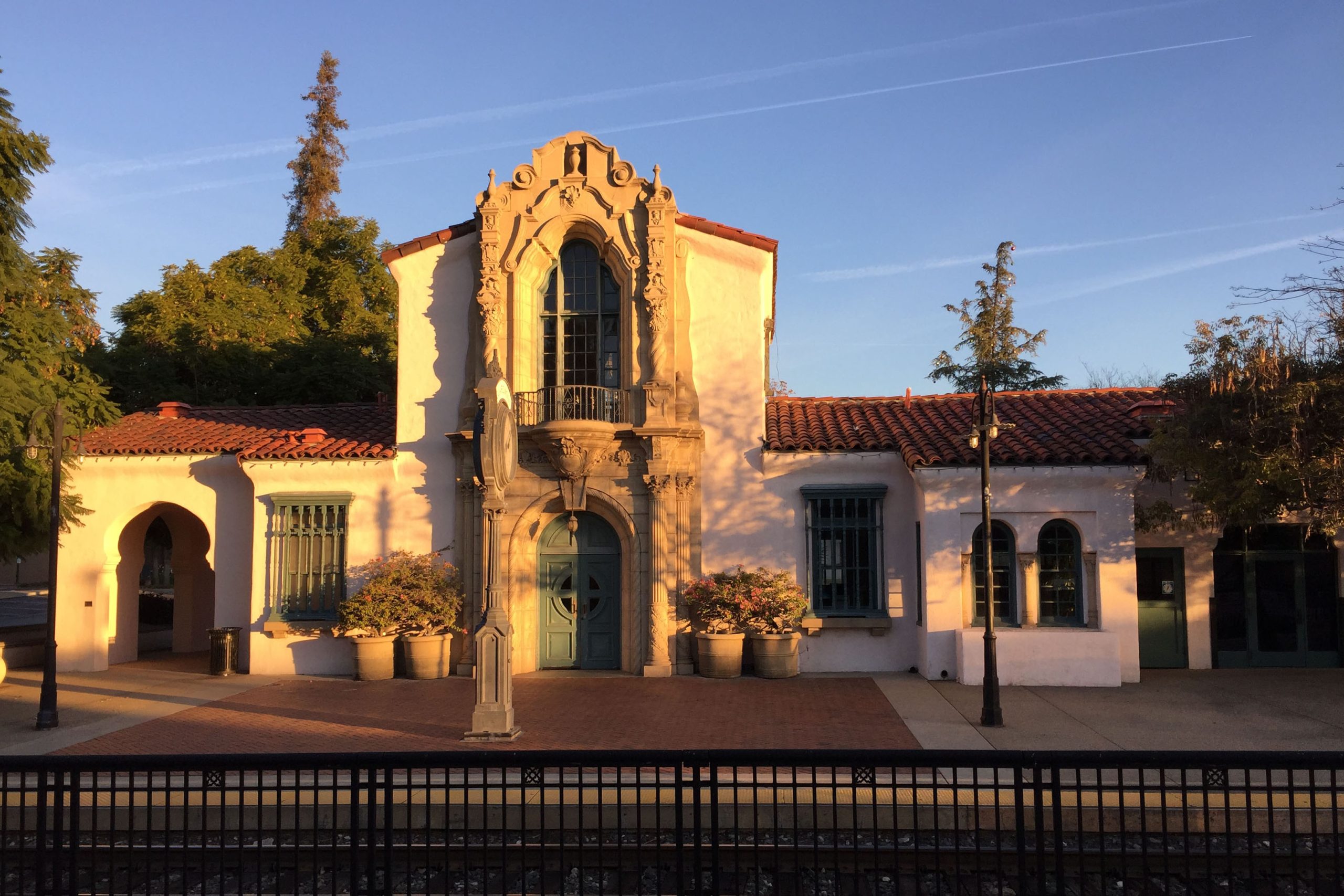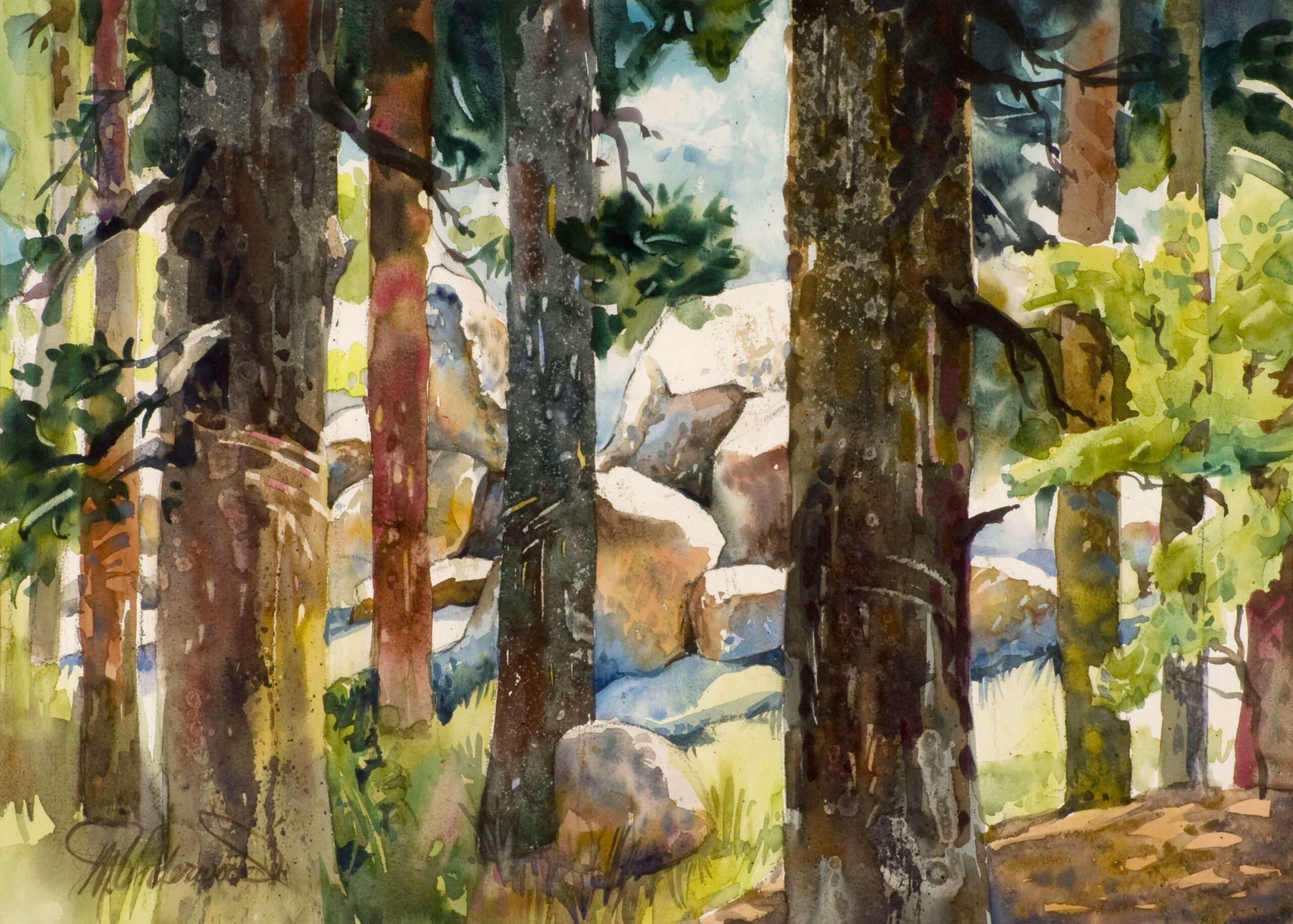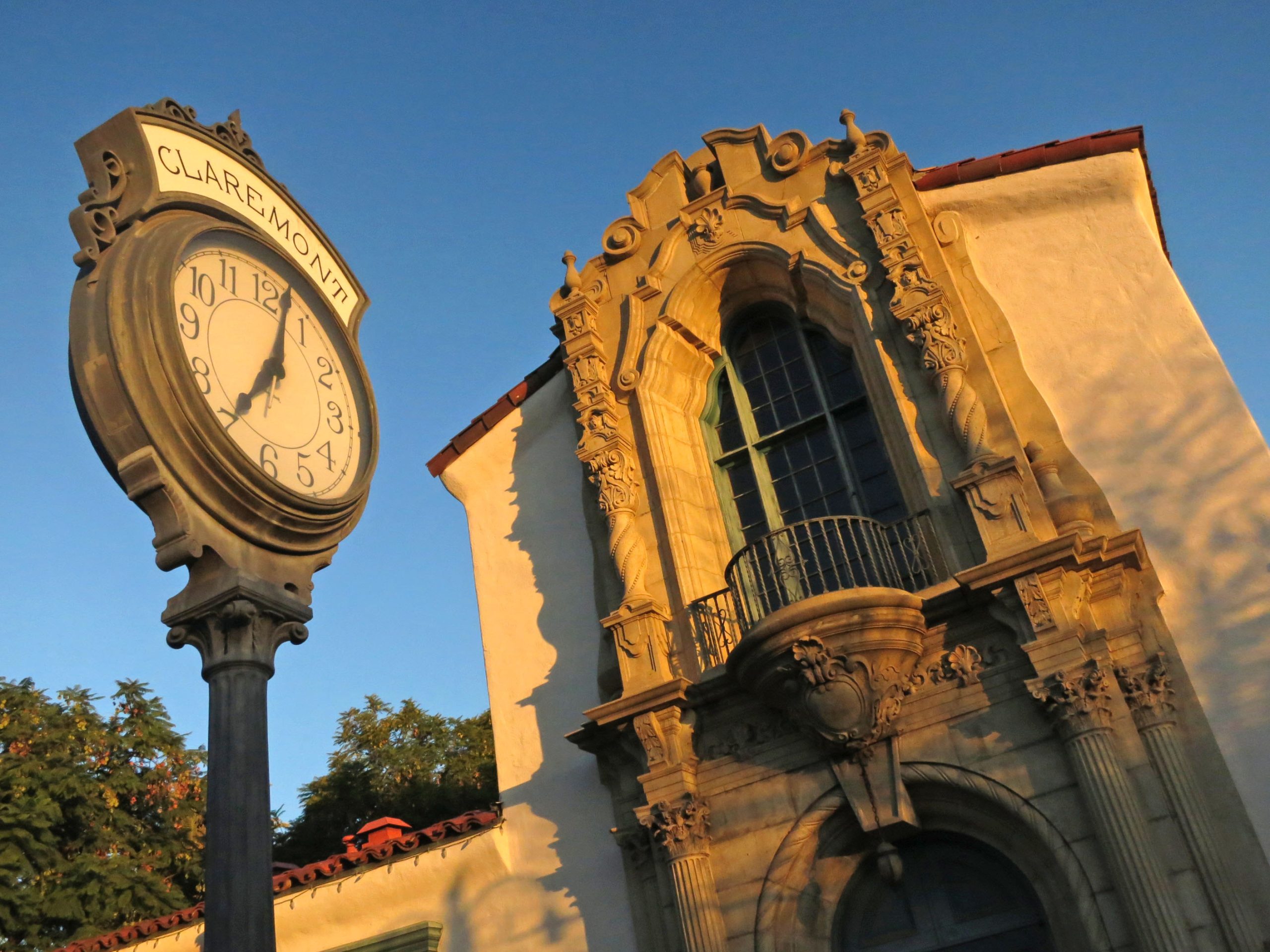
Mission
The Museum’s mission is to celebrate the community’s rich artistic legacy and promote the cultural vitality of the region.
About the Museum
The Claremont Lewis Museum of Art was created to inspire, engage, and enhance the community through education programs, a permanent collection, and exhibitions. The Museum seeks to share transformative art experiences with our diverse audiences. Featuring the work of Claremont area artists, the Museum is open Thursday 12:00 – 4:00 PM, Friday 12:00 – 7:00 PM, Saturday 12:00 – 4:00 PM and Sunday 10:00 AM – 4:00 PM.
History of the Museum
In 1987, a comment by Marion (Hoppy) Stewart, the well-known weaver and wife of sculptor Albert Stewart, sparked the creation of what is now the Claremont Lewis Museum of Art. Stewart had just returned from a walk with a friend to Claremont’s Padua Hills Theater. Her friend said a museum should be created inside the theater to exhibit the work of Claremont’s many artists.
Stewart conveyed this idea to another friend, Marguerite McIntosh, who, along with her late husband, renowned ceramicist Harrison McIntosh, has been part of the City’s arts community for more than 50 years. The remark was enough to inspire Marguerite to seek the support of City leaders in establishing a museum in Claremont.
While the Padua Hills Theater underwent restoration, another significant historic building came into the picture: the College Heights Lemon Packing House, which had just been saved from demolition and earmarked for renovation into a mixed-use building. Its historic significance and ideal downtown location made it a perfect site for the Claremont Museum of Art. The Museum was incorporated in 2004 as a private non-profit organization, and in February 2006, the Board of Directors formally announced that the Claremont Museum of Art would open in the Packing House. This announcement came nearly two decades after McIntosh and others began to explore the possibility of creating a museum that would celebrate Claremont’s rich artistic heritage – past, present, and future.
Beyond securing a visible location, the Museum’s mission expanded as well. In addition to featuring the work of Claremont artists in a permanent collection, the Board decided to devote the institution’s main gallery to showcasing art from across the nation and world. That decision set the Museum on a trajectory to become a regional museum of international significance.
Unfortunately, the reality of the Great Recession derailed this plan. In late 2009, the Board decided that maintaining a staff and exhibition space was no longer viable and the Packing House space was closed.
From 2010 to 2016, the Museum successfully operated as a “museum without walls”. With nearly 300 members, the volunteer organization continued to hold numerous events and programs. CMA presented exhibitions at partner sites, hosted Artful Evenings for members, and opened dozens of artists’ studios to the public in OpenART events. During this time, the Museum introduced Project ARTstART, a unique and innovative youth art education program that partners with Claremont public schools. The Padua Hills Art Fiesta, held throughout the 1950s, was also revitalized and became a popular annual event.
In December 2015, the Claremont Museum of Art entered into a lease agreement with the City of Claremont for the adaptive reuse of the historic Claremont Depot as a small art museum. Thanks to generous and enthusiastic community support, the Museum raised over $150,000 and completed renovation of the atrium and one gallery. The project was designed by local architect John Bohn, JBohn Associates. The Museum opened its new space at the Depot on November 20, 2016. Read more about the historic Claremont Depot at Claremont Heritage Foundation.
Our Phase 2 campaign started after the City of Claremont completed significant seismic retrofitting of the Depot in 2020. Funds were raised to remodel the remaining two rooms of the Depot into galleries in 2021-22. Original ceilings were preserved, and rare 100-year-old plank cedar flooring was revitalized and reinstalled. With high ceilings and expansive wall and floor space, the enlarged Museum reopened in May 2022. The adaptive reuse of this historic building has been a successful public-private partnership between the City of Claremont, Metrolink, and Museum supporters.
In 2022, the Museum received a significant gift from the Randall W. Lewis Foundation, which helped establish an endowment to ensure continued financial stability and increased public access to the Museum. In recognition of this gift, the name of the Museum was changed to the Claremont Lewis Museum of Art, with expanded hours and additional programming.
The founding of the museum was a dream of countless local art supporters over the decades and became a reality through the dedication and commitment of a whole community.The Museum has become a catalyst for fostering creative thinking, engagement, and innovative art programming for the broader community.

Claremont’s Rich Artistic Legacy
Art is an enduring part of Claremont’s history and heritage. Known throughout the country as an “art mecca” in the 1940s, 50s, and 60s, Claremont remains an important center of artistic activity. Claremont artists are integral to the cultural fabric of the City, having contributed to its unique identity and personality for more than 70 years.
Centered by the Colleges, Claremont emerged as an important art community in the years following World War II. The film Design for Modern Living: Millard Sheets and the Claremont Art Community 1935–75 reinforced our awareness of the significance of our artistic heritage, a heritage worthy of preservation and presentation to future generations.
Claremont continues to have an active community of artists. Although many artists have homes and studios in neighboring towns, Claremont serves as a hub for area artists in large part because of the presence and reputation of the Claremont Colleges. In the tradition of their predecessors, local artists continue to impact the quality of the social and built environments.

Staff
Director
Seth Pringle
Administrative Manager
Ingrid Borgards
Social Media/Marketing Associate
Xochilt Vargas
Community Engagement Coordinator/Registrar
Thea Whitaker
Museum Associates
Syndri Alvarez
Enid Bilau
Gabriela Guzman
Cate Hasler
Angelique Hudec
Oliver Kolb
Alex Ofstedahl
Damien Palmer
Doug Pearsall
Consultants
ARTstART
Rich Deely, Director
Madison Garcia, Project Associate
BOARD OF DIRECTORS
Ryan Zimmerman, President
Sheri Nagel, Vice President
Rae Rottman, Treasurer
Emily Moultrie, Secretary
Barbara Ashworth
Susan M. Allen, Ph.D.
Paige Brownlie
Juliet Kane
Michael Kotzen
Mary Livesay
Valerie Martinez-Bencomo
Catherine McIntosh
Linda Moore
Laura Verbal
Richard Watkins
EMERITI
Barbara Brown, Emerita
Marguerite McIntosh, President Emerita
Dr. Janet Myhre, Emerita
Marilyn Ray, Emerita
Elaine Turner, President Emerita
Joseph “Joe” Unis M.D., Emeritus
Mary Weis, Emerita
Harold B. “Hal” Nelson, Special Advisor
Thank you to the many supporters of the Claremont Lewis Museum of Art. Click here to view the Museum’s Supporters page
Cultural Equity and Inclusion
STATEMENT: The Claremont Lewis Museum of Art is committed to serve the public in ways that respect the plurality of our communities. Complete Cultural Equity and Inclusion Statement.


